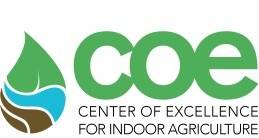Over the last decade or so, advances in areas such as lighting, robotics, optical sensors, climate control, plant nutrition, genetics and data analytics have helped to launch a new high-tech industry – indoor agriculture. The race is now on to develop sustainable and profitable models (1) that can produce indoor crops at industrial-scale levels that can successfully compete with traditional mass-produced field-grown crops.
As of today, however, indoor farmers are still niche players within every single traditional crop, with one notable exception – mushrooms. In order to grow mushrooms at commercial scale, they must be grown indoors in a controlled climate – to date there are no industrial mushrooms fields anywhere! This was just as true 100+ years ago when the commercial mushroom industry first started as it is today. Because of this, indoor mushroom farmers were able early on to develop highly successful industrial-scale production and distribution models, in large part because they never had a field crop to compete with.
Mushroom Farming in PA: Mushroom Capital Of the World
Nowhere is this better illustrated than around the town of Kennett Square in Southeastern PA, nestled in bucolic farm country midway between Philadelphia and Baltimore. Someone driving through that area might quizzically note the odd-looking windowless block buildings scattered through the area, seemingly out of place among the green rolling hills and colonial stone farmhouses. Actually, they are one of very few signs that you are deep in mushroom country.
In fact, those strange windowless edifices are indoor vertical farms, raising mushrooms on a massive scale on stacked beds many levels high. Some of the larger farms produce more than 10M pounds of mushrooms per year. The oldest buildings still in use date from the 1920s, when the basic growing methods still used today were worked out. This makes the Kennett area host to what is by far the oldest and largest concentration of vertical farms in the world, what I like to call the ‘Fungiplex.’

Inside a Traditional Mushroom Farm
The mere existence of the Kennett Fungliplex is surprising to many people, not least many in the fledgling indoor agriculture business. They are so used to assuming that they are at the forefront of a brand new industry that they are shocked to learn that, for one crop at least, it has already been around at industrial scale for over 100 years. It’s almost as if Elon Musk suddenly found out that a large and very successful human colony already existed for decades on Mars, but no one had bothered to tell him!
But it gets more interesting. All told, more than half of the US mushroom crop is grown in the Fungiplex, tended by some 10,000 workers, and generating $500M in annual sales with a regional economic impact of some $3B/year (2). The next largest mushroom complex in the US is a Kennett off-shoot just an hour’s drive away near Reading, PA, producing another 15% of the US crop. Collectively, they comprise two-thirds of the US mushroom crop (3), and are Pennsylvania’s largest agriculture industry, bigger even than the state’s more famous – but declining and dispersed – dairy industry.

Inside a High-Tech Mushroom Farm
Today Kennett’s total annual fresh mushroom production is over 500M pounds (4), and continuous improvements have driven today’s wholesale delivered price down to about $1 per pound anywhere in the US. Those are achievements that other indoor produce farmers today can only dream of emulating sometime in the distant future. You might wonder: how is this even remotely possible??
Granted, some of the Fungiplex’s amazing price and production performance is due to the simple fact that mushrooms do not require light to grow. This eliminates the need for expensive grow lamps and the electricity they require, eliminating major investment and operating costs required for nearly every other indoor crop. But the real secret goes far beyond the growing cycle, and is rooted deeply in how the whole Kennett community operates to support the mushroom industry.
The Fungiplex Cluster
The Kennett Fungiplex is what has been termed by economists as an ‘agriculture cluster’ (5). Currently, it hosts about 50-70 sizable mushroom farms, mostly family-run for generations. Such clusters are not unusual around the world – they have long existed for field crops such strawberries, peaches, avocados, blueberries, and many others. Usually, however, the location of such clusters has to do with advantaged growing conditions – soil, climate, etc. – that make it far better to farm there at commercial scale. But mushrooms are grown indoors, so this principle doesn’t seem to apply.
In fact, the Fungiplex gets its biggest advantage not from its location in Kennett per se, but from the informal but very sophisticated ecosystem of other businesses that have grown up around it, offering a wide range of specialized supporting products and services. These include everything from builders who understand vertical farm construction, specialized HVAC suppliers and technicians that understand indoor growing climate control, and storage, shipping and logistics companies specializing in fresh produce – the list goes on and on. It also includes municipalities, financial institutions, regional development organizations and utility companies that truly understand and are capable of satisfying the particular needs of indoor farmers.
The good news for indoor farmers of other crops is that only few of these advantages are highly mushroom-specific. Yes, some of the products and services found in the Fungiplex are truly specialized for the mushroom growing cycle – spore and substrate production, for example. But outside the growing cycle itself, most of the available products and services are crop-agnostic. For example, post-grow services like packing, storage, shipping, and logistics, for example, are already available or easily adaptable to support almost any other produce crop.

Modern High-Tech ‘Dutch-Style’ Mushroom Farm Facility
Lessons Learned from Mushroom Farmers
To summarize, the facts cited here suggest two main takeaways for the emerging indoor farming industry:
- Despite what many people believe, indoor farming is not really a ‘new’ industry. Recent technical innovations now allow us to grow many more indoor crops commercially, but the basic blueprint for what it takes to scale production and distribution profitably has already been developed over decades in clusters like in the Kennett Fungiplex. In particular, the 100+year dominance of the Fungiplex in the mushroom industry is living testimony to the sustainability and overwhelming advantages of clustering.
- More specifically, the advantages of clustering need to be considered more seriously by today’s emerging indoor agriculture firms – and their investors. Niche firms can potentially operate successfully in many kinds of locations, but those firms that want to compete in the mass production marketplace will need kind of the scalable facilities available only in a clustered location like the Fungiplex. The fact that the Fungiplex is already specifically tailored to servicing indoor agriculture makes locating there a particularly interesting option for de-risking investments in new large-scale indoor growing facilities.
We’ll be discussing these points – and more – in later blog posts. Meanwhile, we welcome your questions, comments and suggestions.

Michael Guttman
Michael Guttman is a special contributor to the Center of Excellence for Indoor Agriculture.
References
- Stein EW. The Transformative Environmental Effects Large-Scale Indoor Farming May Have On Air, Water, and Soil. Air, Soil and Water Research. January 2021. doi:10.1177/1178622121995819
- https://modernfarmer.com/2014/05/welcome-mushroom-country-population-nearly-half-u-s-mushrooms/
- https://www.worldatlas.com/articles/what-are-the-biggest-industries-in-pennsylvania.html
- https://www.nass.usda.gov/Publications/Highlights/2019/2019mushrooms_report.pdf
- https://aese.psu.edu/nercrd/publications/rdp/rdp29.pdf




